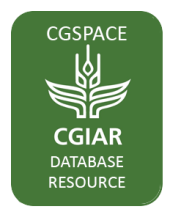/ library resources
Showing items 1 through 9 of 46.Experiences show that integrating restoration efforts at landscape level need to be coupled with intensification efforts at farm/plot level to promote synergy and attain multiple benefits.
This report provides a comprehensive guide designed to facilitate the co-design of inclusive landscape management plans.
Landscape restoration initiatives often have the potential to result in environmental gains, but the question of whether these gains are sustainable and how they are linked to other community needs (social, productivity and economic gains) remains unclear.
Multi-stakeholder platforms (MSPs), also referred to as innovation platforms or learning alliances, is a form of governance that utilizes pooled resources to address existing regulatory, participation, resource and learning gaps bringing together the strengths of private, public, and nonprofit pa
Accurate biomass estimation is critical to quantify the changes in biomass and carbon stocks following the restoration of degraded landscapes.
Every year in Africa, nearly 3 million hectares of forests are lost and sixty five percent (65%)
of the land is affected by degradation. An estimated 3 percent of GDP is lost annually from
soil and nutrient depletion on cropland. This places forest loss and land degradation among
Bush encroachment is a matter of growing concern in the semi-arid regions of Namibia. Locally adapted, long-term solutions for land restoration must be elaborated. It is crucial that local scientists are empowered to map and monitor the degradation process themselves, our authors maintain.
Paginação
Land Library Search
Through our robust search engine, you can search for any item of the over 73,000 highly curated resources in the Land Library.
If you would like to find an overview of what is possible, feel free to peruse the Search Guide.

